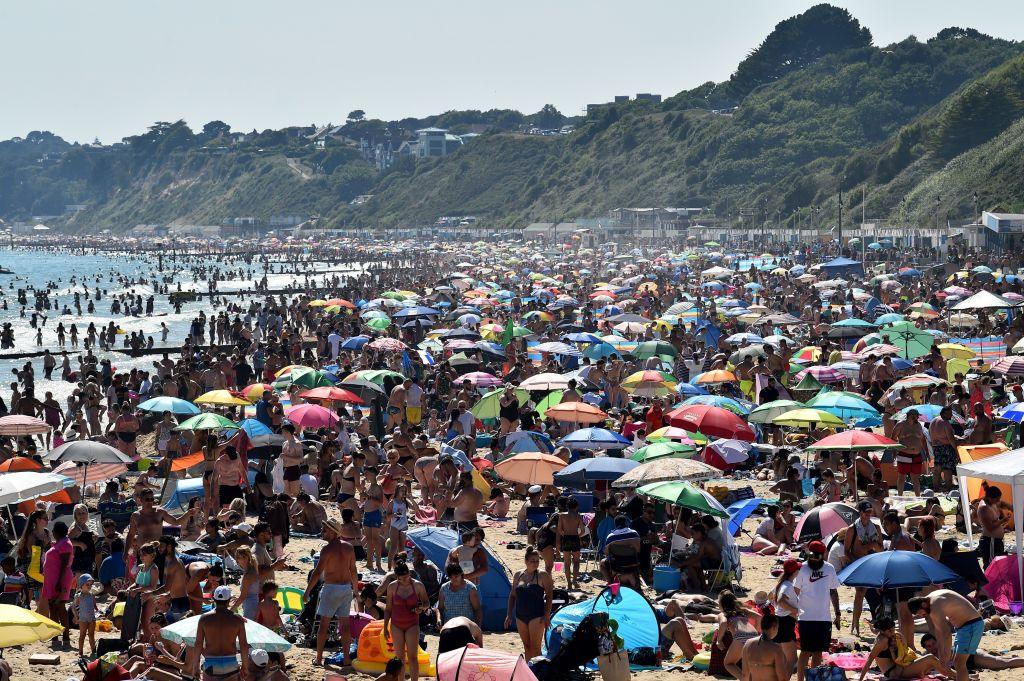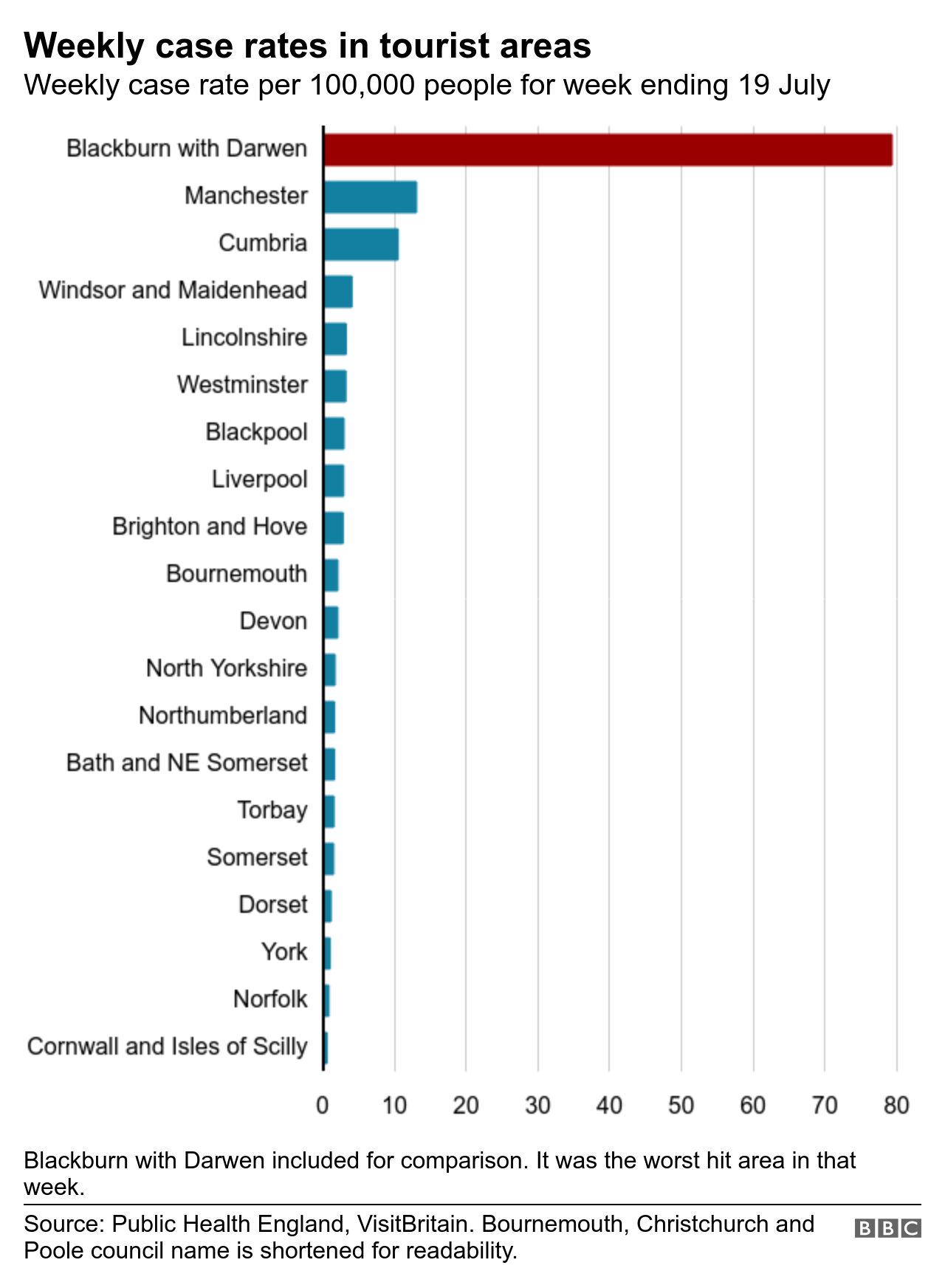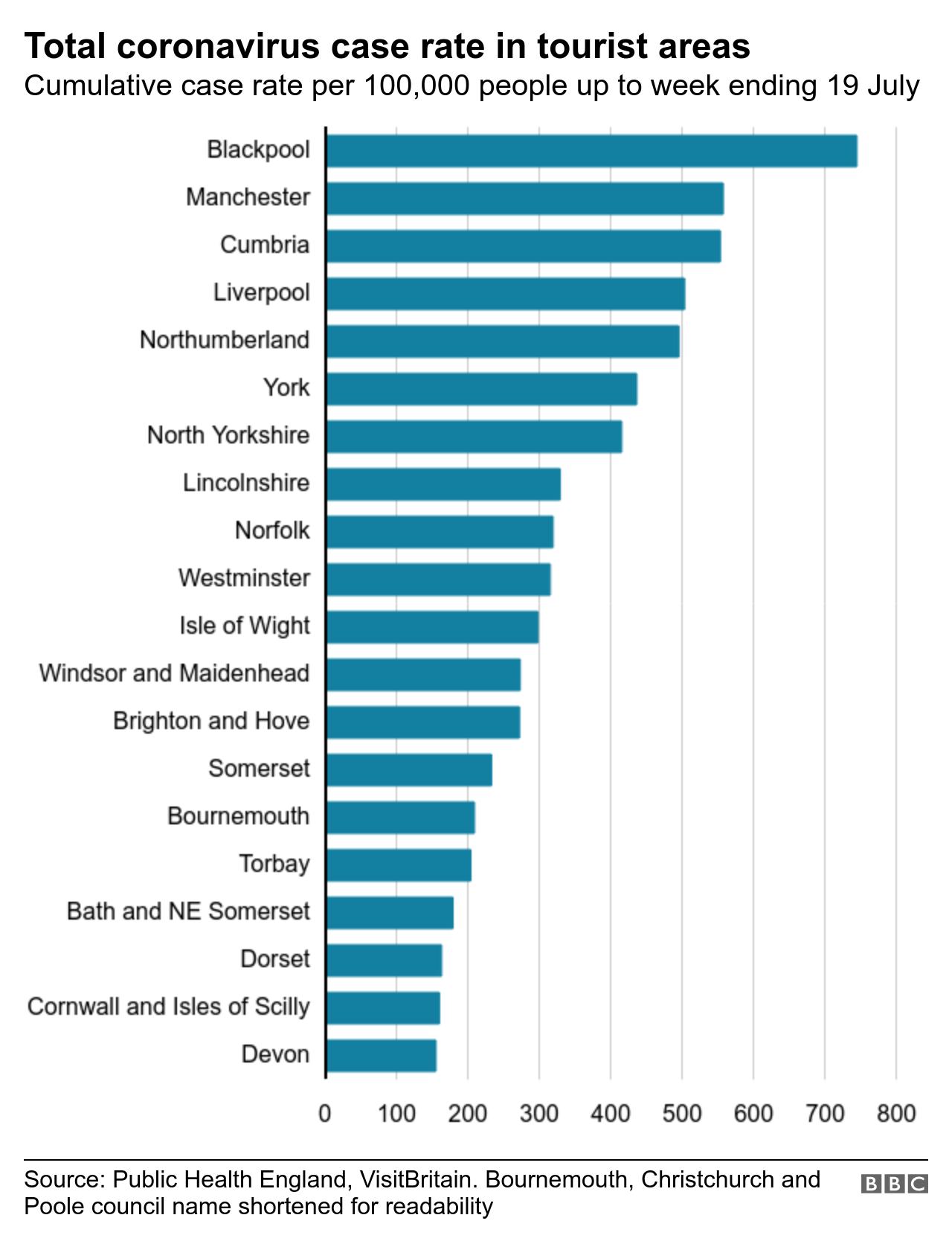Did Bournemouth beach crowds spread coronavirus?
- Published

It has been a month since thousands of people flocked to Bournemouth beach for this year's warmest weekend.
The pictures of crowded stretches of sand - at a time when more than 100 people a day were still dying of Covid-19 - caused concern about the spread of the virus, following the loosening of lockdown rules in early June.
On 25 June, Bournemouth, Christchurch and Poole Council declared a "major incident"- its leader, Vikki Slade, said the authorities were "absolutely appalled at the scenes witnessed on our beaches".
Was there a spike in cases?
One month on, the statistics do not suggest a significant spike in coronavirus cases.
However, they have increased slightly:
For the week ending 21 June, the area had 1.3 cases for every 100,000 people in Bournemouth, Christchurch and Poole
By the week ending 19 July, this had increased to two cases for every 100,000 people
To put that in context, the coronavirus rate in Leicester is currently 70 cases per 100,000 people.
This does not mean the crowds didn't bring Covid-19 to the town - just that any arrival of the virus in Bournemouth was not spread significantly.
We also don't know if visitors spread the infection among themselves and then returned with it to their home areas.
It's worth remembering that, at the time, although lockdown rules had been eased, restrictions were still in place on pubs, cafes and restaurants - places where people might gather.
If there had been a spike in cases, it would have been up to public health experts to determine whether there was a correlation between the two events.

Councillor Slade said the council was "truly excited" to welcome visitors back to the beach, but noted 25 June had been particularly busy.
"As a hugely popular tourist destination with 15 miles of coastline, the resources of all local agencies were undeniably stretched when unlimited travel and exercise on beaches were allowed long before our hotels, restaurants and other attractions were permitted to open
"As a result of our experiences we have introduced marshals at busy car park entrances, extended our security provision - enhanced our first aid provision and put additional traffic management plans in place," she added.
What about other tourist areas?
Bournemouth was not the only tourist area that said it was worried about the arrival of visitors.
In early June, concern was raised in areas including Dorset, Cumbria and Norfolk. Counties such as these have much smaller health infrastructures to serve smaller populations.
To understand whether popular tourist areas have seen a spike recently, we took the 20 most popular holiday spots (relative to their population) in England, as recorded by VisitBritain, external.
Weekly coronavirus rates have dropped or stayed the same in 13 of these areas
There is currently no data for the Isle of Wight for this week
The case rate has increased in Torbay, Devon, and Windsor and Maidenhead, Cumbria, Bath and North East Somerset, and Bournemouth, Christchurch and Poole.
However, it is important to point out that almost all of these areas have rates substantially below the national case rate in England of around 6.5 per 100,000 people.

Just Cumbria, home to the Lake District, has a higher rate. There, the coronavirus case rate is 10.4 cases per 100,000 people. In the week ending 21 June, the case rate was 5.8.
Should we expect spikes?
Holiday accommodation, pubs and restaurants were only allowed to open from 4 July, meaning more tourists will go to these areas.
However, the government hopes that social distancing guidelines for businesses, as well as their test and trace scheme, will help prevent major spikes. Local authorities now have greater powers to react quickly where there are risks.
The fact that many tourist areas offer outdoor activities, such as going to the beach or hiking, is a benefit.
"Outside activities are known to be much safer. This is one of the few facts on Covid-19 that is virtually universally agreed," says Prof Keith Neil, a professor in infectious diseases at the University of Nottingham.

What do I need to know about the coronavirus?
A SIMPLE GUIDE: How do I protect myself?
AVOIDING CONTACT: The rules on self-isolation and exercise
HOPE AND LOSS: Your coronavirus stories
LOOK-UP TOOL: Check cases in your area
VIDEO: The 20-second hand wash

The smaller population densities help some of these areas as well, meaning the virus could be less likely to spread across the area.
During the recent spike in Leicester, the city's tightly packed terraced housing and workplaces were pointed to as potential causes.
"Rural areas have shown much lower rates of disease. Population density is probably a factor and also there are fewer people to mix with. From my limited experience in Derby and Derbyshire, social distancing has been better adhered to in villages than in the city," Prof Neil says.
But that doesn't mean these places won't be affected in future, according to Prof Linda Bauld, an expert in public health at the University of Edinburgh.
"The biggest risk is if cases rise generally across the country while more people are gathering in those areas. If that happens, particularly indoors, the risks are higher. Those [tourist] areas are not going to be exempt from that," she says.
While many activities in tourist areas are based outdoors, pubs and restaurants in resort towns can be particularly risky.

Throughout the pandemic, most tourist hot spots have seen far fewer cases so far. Somerset, Torbay, Devon, Dorset, Cornwall and Bournemouth, Christchurch and Poole have all been in the bottom 10 for overall coronavirus cases.
Those tourist areas which have seen higher rates, such as Blackpool, Manchester, Liverpool and York tend to be larger and more densely populated.



.